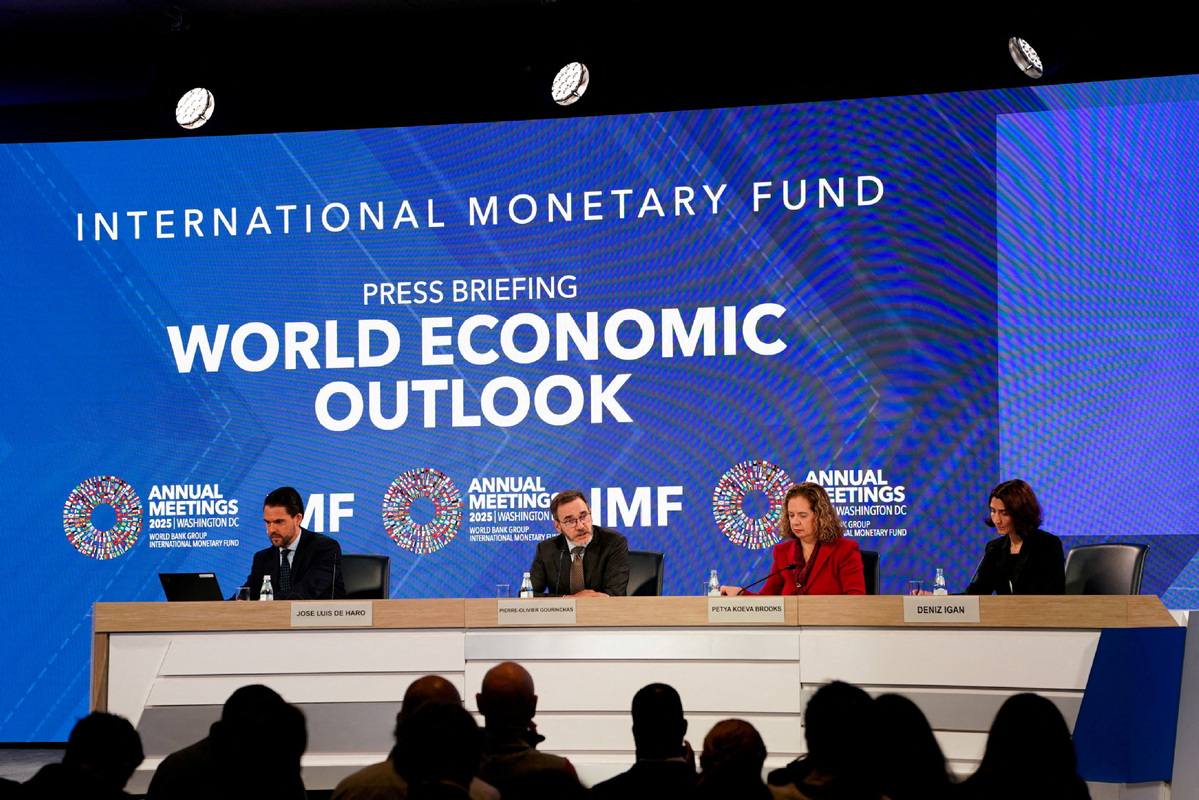Experts: Washington's policy shifts shroud global outlook
Higher tariffs, immigration curbs fuel volatility, inflation risks, webcast hears


United States policy shifts, including higher tariffs and tighter immigration rules, are dimming prospects for global growth, experts say.
"Right now, the US economy, for obvious reasons, is the source of the greatest uncertainty and volatility, probably the biggest change agent in the world," said Adam S. Posen, president of the Peterson Institute for International Economics in Washington.
Discussion in a webcast last week highlighted how US economic turbulence is rippling outward, dampening global investment and trade.
The institute's semiannual forecast, published on Oct 9, painted a picture of a US economy buoyed temporarily by optimism around AI, but facing intensifying drags from trade barriers and reduced labor inflows. The experts warned that these factors could push inflation higher and slow growth, with spillover effects on partners from Europe to emerging markets.
The event preceded this week's International Monetary Fund and World Bank autumn meetings in Washington, in which officials are grappling with similar concerns. The IMF published its World Economic Outlook on Monday, projecting global growth to ease from 3.3 percent last year to 3.2 percent this year and 3.1 percent next year, pointing to headwinds from protectionism and uncertainty.
Recent US actions have amplified these risks, IMF reports and the panelists said.
In February, the US imposed higher import tariffs, sparking retaliatory measures and front-loading of trade that temporarily masked underlying weaknesses. Immigration restrictions have slashed net inflows by an estimated 2 million this year, according to the Congressional Budget Office, straining labor markets. Stock markets have surged on AI hype, with the S&P 500 up about 15 percent this year, though the gains have been concentrated in tech giants.
Karen Dynan, a nonresident senior fellow at the Peterson Institute and a former US Treasury chief economist, upgraded her global GDP growth estimate to 3.1 percent for this year, up 0.4 percentage points from spring, but forecast a dip to 2.9 percent next year.
"Global growth continues despite headwinds and risks," Dynan said. "Incoming data has been stronger than we expected last spring." However, she cautioned that resilience stems from temporary factors such as trade front-loading and inventory buildup, not fundamentals.
"(US) payroll growth has probably come down more than the neutral rate," she said, attributing part of the drop to immigration curbs lowering the benchmark for job gains.
Labor indicators show mixed signals. Unemployment and job openings softened from 2023 to 2024 but have stabilized in 2025. Dynan suggested that reduced immigration is affecting both supply and demand, leaving slack unchanged so far.
Tariffs, now at their highest in 90 years, are poised to lead to more serious results. Effective rates have risen sharply, but the pass-through to consumers has been delayed by front-loading, warehousing and cost absorption by importers.
Unsustainable practices
"None of these practices are sustainable," Dynan said. "We should expect that this good news that we've seen on inflation, tariff-related inflation so far, is not going to be sustained."
Core inflation, which excludes volatile food and energy costs, is hovering about 0.75 percentage points above the Federal Reserve's 2 percent target.
Productivity has surprised on the upside since the pandemic, probably because of better job matches rather than AI, though the adoption of AI is rapid, Dynan said.
This optimism fuels business investment, which is up 4 percent this year, though skewed toward AI-related areas such as software, she said. Stock gains, concentrated in the "Magnificent Seven" firms now accounting for more than 35 percent of S&P capitalization, support consumption via wealth effects. Household net worth relative to income is elevated, implying positive boosts but vulnerability to corrections.
"If stock prices were to, say, decline by 15 percent based on current market capitalization, that's about a $10 trillion loss in wealth," Dynan said. "The standard rules of thumb imply that if that were to occur, there would be a drag, a considerable drag, on consumption growth of about one and one-half percentage points accumulatively."
Globally, large, advanced economies will slow next year, she said. Europe will stabilize unevenly, Japan will receive a fiscal-monetary boost but will retrench later, and the United Kingdom will struggle with restraint and weak productivity.
Emerging markets are being led by India and China, both of which are sustaining growth despite tariffs. Chinese exports held up "surprisingly well", Dynan said.
The IMF echoed this, forecasting emerging growth above 4 percent, with China and India leading. It highlighted China's role in offsetting some global slack, as its surpluses could provide opportunities if markets open more, though fragmentation limits trade gains to 2.9 percent in 2025 to 2026.
Posen said US volatility is the key driver. "What happens in the US in terms of growth, inflation, policy response is probably the biggest driver."
yifanxu@chinadailyusa.com

































